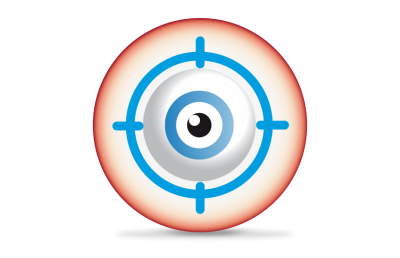
Keratoconus
Keratoconus is caused by a thinning in the cornea. This gives the cornea a pointed (cone) shape. Symptoms of keratoconus include blurred vision, distorted vision, headaches and hypersensitivity to light.
Keratoconus is a congenital eye disease. A person born with keratoconus often does not develop symptoms until during or after puberty. Gradually, the cone formation occurs and with it the symptoms as well. It usually occurs in both eyes.
Keratoconus and contact lenses
Since the cornea is the strongest refracting lens of the eye, its distortion gives reduced visual acuity. This cannot be optimally corrected with glasses. A (special) contact lens is a much better option because it provides the eye with a new anterior surface. The space between the cornea and contact lens is filled with tear fluid and thus the irregularity is corrected. Thanks to a variety of innovations, there is a wide range of options for using contact lenses to improve visual acuity in cases of keratoconus.
RGP (hard) contact lenses have been the first choice for years when it comes to visual acuity improvement for keratoconus. They are smaller than the cornea and float, so to speak, on the tear fluid. The modern RGP lens has long since ceased to be comparable to the old-fashioned “hard” lens of former times. Modern ultra-thin designs executed in very eye-friendly materials make them the solution for regaining normal function for many keratoconus patients.
Soft contact lenses were not an option for keratoconus for a long time. These lenses are very comfortable but also very flexible. This causes the irregular shape of the cornea to be assimilated rather than corrected. New special soft keratoconus designs have changed this. By increasing the center thickness only where needed and keeping the rest of the lens comfortably thin, these lenses are a good option for keratoconus patients who cannot get used to RGP lenses or are better off with soft lenses due to circumstances. Although visual acuity will often be slightly less corrected than with RGP lenses. This depends on the stage of the keratoconus.
Scleral lenses are RGP contact lenses that are large enough to cover much of the front of the eye. They rest on the white part of the eye (the sclera) and bridge the cornea. Thus there is no contact with the cornea. The space between the cornea and the back of the lens is filled with fluid. This means that the keratoconus is safely embedded in a fluid reservoir. The irregularity is neutralized and the lens forms the new front of the eye. Such large lenses seem hefty, but are actually very comfortable because the white of the eye (the sclera) is numb. Scleral lenses are increasingly popular as a solution for keratoconus, for example. This is because they combine the optimal visual acuity of RGP contact lenses with the comfort that comes close to soft lenses. As a result, scleral lenses are increasingly the first choice, especially for advanced stages of keratoconus.
Want to learn more about keratoconus or research the best solution for your situation? Then visit a contact lens specialist with experience in the medical application of contact lenses. You can find such a specialist using our store locator.


Eye disorders
It’s not always a refractive defect that causes you to see less sharply. Sometimes there’s something else going on.

Eye exams
There are several ways to examine your eyes. An initial exam is often done using an autorefractor.

Myopia
Nearsightedness, also known as myopia, is an eye defect in which you have trouble seeing sharply in the distance.
